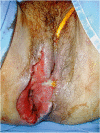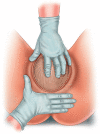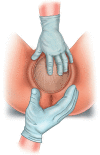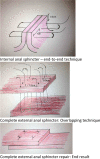An International Continence Society (ICS)/ International Urogynecological Association (IUGA) joint report on the terminology for the assessment and management of obstetric pelvic floor disorders
- PMID: 36443462
- PMCID: PMC9834366
- DOI: 10.1007/s00192-022-05397-x
An International Continence Society (ICS)/ International Urogynecological Association (IUGA) joint report on the terminology for the assessment and management of obstetric pelvic floor disorders
Erratum in
-
Correction to: An International Continence Society (ICS)/ International Urogynecological Association (IUGA) joint report on the terminology for the assessment and management of obstetric pelvic floor disorders.Int Urogynecol J. 2023 May;34(5):1137. doi: 10.1007/s00192-023-05507-3. Int Urogynecol J. 2023. PMID: 36951974 Free PMC article. No abstract available.
Abstract
Aims: The terminology of obstetric pelvic floor disorders should be defined and reported as part of a wider clinically oriented consensus.
Methods: This Report combines the input of members of two International Organizations, the International Continence Society (ICS) and the International Urogynecological Association (IUGA). The process was supported by external referees. Appropriate clinical categories and a sub-classification were developed to give coding to definitions. An extensive process of 12 main rounds of internal and 2 rounds of external review was involved to exhaustively examine each definition, with decision-making by consensus.
Results: A terminology report for obstetric pelvic floor disorders, encompassing 357 separate definitions, has been developed. It is clinically-based with the most common diagnoses defined. Clarity and user-friendliness have been key aims to make it usable by different specialty groups and disciplines involved in the study and management of pregnancy, childbirth and female pelvic floor disorders. Clinical assessment, investigations, diagnosis, conservative and surgical treatments are major components. Illustrations have been included to supplement and clarify the text. Emerging concepts, in use in the literature and offering further research potential but requiring further validation, have been included as an Appendix. As with similar reports, interval (5-10 year) review is anticipated to maintain relevance of the document and ensure it remains as widely applicable as possible.
Conclusion: A consensus-based Terminology Report for obstetric pelvic floor disorders has been produced to support clinical practice and research.
Keywords: Childbirth trauma; Obstetric injuries; Obstetric pelvic floor disorders; Perineal trauma; Terminology.
© 2022. The Author(s).
Figures























References
-
- Keighley MRB, Perston Y, Bradshaw E, et al. The social, psychological, emotional morbidity and adjustment techniques for women with anal incontinence following Obstetric Anal Sphincter Injury: use of a word picture to identify a hidden syndrome. BMC Pregnancy Childbirth. 2016;16:275. doi: 10.1186/s12884-016-1065-y. - DOI - PMC - PubMed
-
- The Management of Third- and Fourth-Degree Perineal Tears. Green-Top Guideline No 29, London; 2015.
-
- Concise Oxford English Dictionary . ninth ed. Clarendon Press Oxford; 1995.
MeSH terms
LinkOut - more resources
Full Text Sources
Medical
Research Materials

